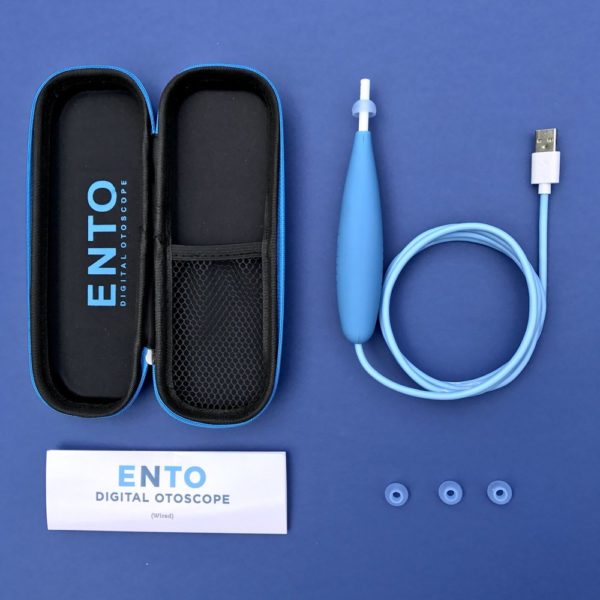
Ear pain evaluation through an online video consult with no additional devices has been a weak point of telemedicine. It is such a common complaint, particularly in children but the ability to actually see the eardrum just is not possible with these "Skype-like" interactions. So a telemedicine clinician can not actually make a diagnosis of "ear infection" but instead simply must document "ear pain" except in some very particular situations such as an obvious infection of the ear canal or a case where there is drainage of infection from the ear. But in most circumstances, ear complaints do require an in-person visit in order to make an exact diagnosis.
Let me start off by saying that sticking anything inside your ear canal puts you at risk of damaging both the ear canal and the eardrum. This can lead to infections, puncture of the eardrum, and hearing loss. Plus, without a little getting used to it, it can be hard to get the view you want without a bit of guidance and practice. As beginning medical students learn, it is not usually a direct path from the outside of the ear to the eardrum. Our ear canal is usually angled slightly towards the front of our head, so to get the best view of the eardrum, it is necessary to pull backward slightly on the ear to create the straightest path possible in order to view it. Otherwise, you end up just looking at the skin of the ear canal. If you try and use the viewing piece to just push directly in, it becomes uncomfortable and can cause damage.

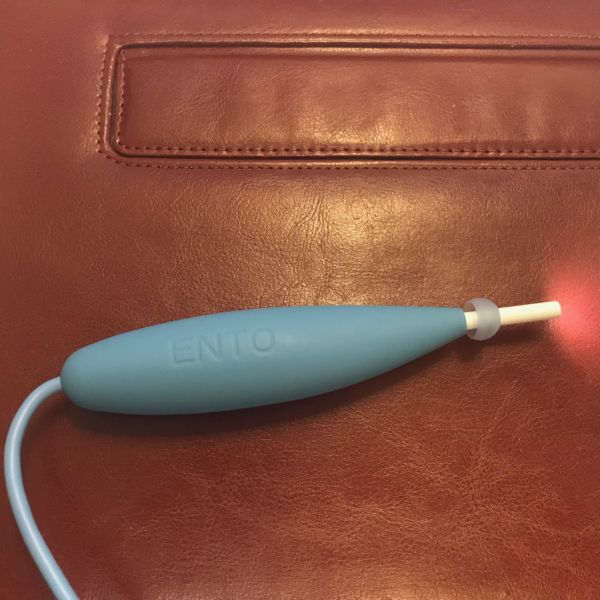
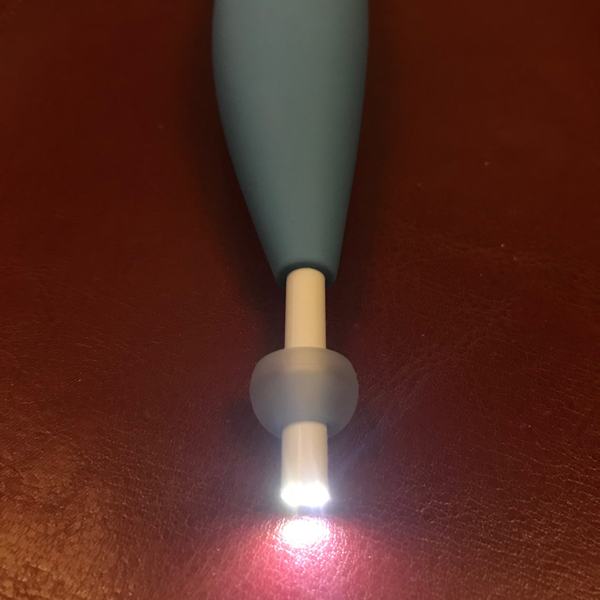
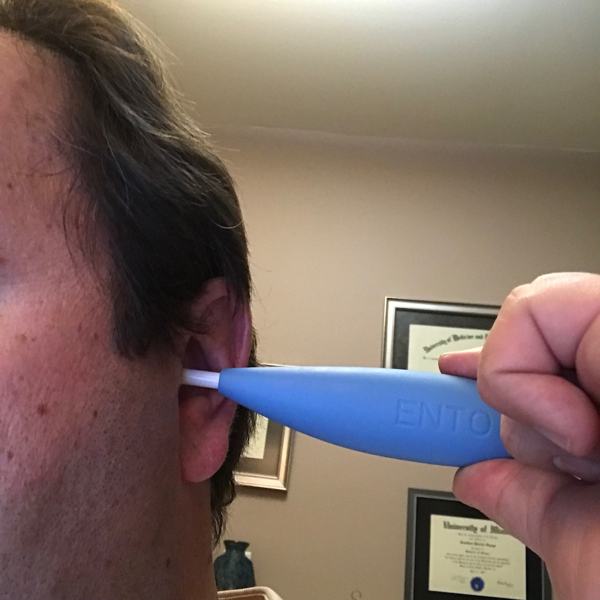
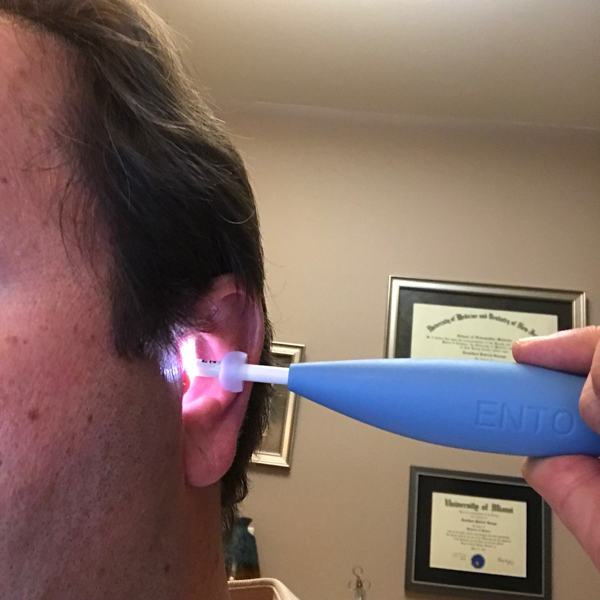
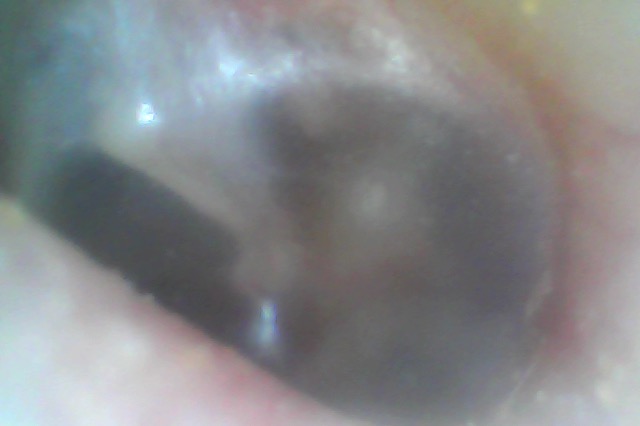
The ENTO Otoscope is good for looking into the ear canal to look for the cause of various ear complaints. In theory, it could also be used to look into the first few inches of the nose too. From a telemedicine perspective, this camera could be a significant help to telemedicine clinicians in obtaining that elusive bit of information that can limit getting to the precise diagnosis when it comes to ear complaints. This could be particularly useful for adults and parents with children older than 5 (see limitations below) that always seem to be having ear issues. If you have children that seem to have problems with their ears every year, the $39.99 price tag could save you hundreds, if not more, in visits to the pediatrician, urgent care or emergency room.
While it is possible to do a self-exam and make a self-diagnosis, snap some pictures and send it off to the doctor or other healthcare provider...getting a little live guidance from the medical provider of what information and views they need can make the self-exam route less prone to error and injury. Using this camera during a live telemedicine video interaction with real-time guidance would also allow for collecting other important pieces of information such as fever, swollen lymph nodes(glands), how sick the patient looks, and more that makes for a much safer and more precise medical diagnosis and treatment decision.
One of the biggest draws of this camera currently is its price. It is much more affordable than most other digital otoscopes on the market which can be in the multiple of hundreds of dollars range. Going beyond the price tag, the camera is easy to hold and has a nice cord length that doesn't make it awkward to get the camera to where you need it for the exam. The fact that this camera is plug-and-play for most situations(although some may need to use the downloadable image capture software for Windows computers), makes it easy to use with photo and video applications that allow you to select your camera source. I use it primarily with videoconferencing software for real-time exams and it works flawlessly. The image quality is also good for the price. Once the camera is correctly positioned, getting a decent quality image of what you are looking for is not hard to do.
Limited Use in Small Children: The diameter of the tip of this camera is 5.5mm wide which limits the ability to insert it into very small ear canals. So the ability to use this camera on many children less than 5 years old is potentially limited.
Limited Viewing Distance: A short focal length, or more simplistically, how far from the camera lens something must be to be at its best focus. With the focal length being short (approximately 10mm), it requires the camera to be fairly close to the object it is viewing to get the best image. That means that the camera needs to be carefully guided into the ear canal for the best view. There is a soft silicone ear piece that helps prevent the camera from being inserted too far which is great. However, in order to adjust the view and go a little further into the ear canal, it requires taking out the camera, adjusting the earpiece, and then re-inserting. You might have noticed that the image attached to the slideshow above of the eardrum is not perfectly in focus. This actual image of my eardrum is an example of the focal length issue. While I was able to get a clear image on my computer(and you should be able to get one during a real-time evaluation), by the time I snapped the photo, I had moved just enough to make it a little blurry again. After several tries to get a clear photo, I gave up. It is good enough to make a diagnosis of an ear infection or to see if the ear canal is clear.
Heat Generated: The camera lens has a built-in light source to assist in seeing inside the ear canal. However, if plugged in too long, the tip of the camera becomes warm to touch. While it does not heat up enough to cause a burn, it can be perceived as "hot" by children and cause a startle and perceived discomfort which may make getting the exam completed difficult. My suggestion for this issue is to not plug the USB port of the camera in until you are ready to use it because more heat is generated the longer the lights stay on.
Limited Viewing Angles: While technically beyond what I would expect for a camera in this price range, the fact that it is a rigid camera where the camera lens is housed inside of a rigid metal tube means the end of the camera does not bend. This is fine but it limits the ability to move the camera tip around. For example, once you get an in-focus look at the ear drum, it might be desirable to move the camera tip up, down, and side to side similar to sticking your head in a doorway and then moving your head around to take a better look around. This is not currently possible to do without tilting the entire camera in multiple directions which can be uncomfortable for the patient. Again this is a feature I would not expect at this level, but is a feature of many medical grade scopes.
The camera comes with the camera lens enclosed in a metal sheath which protrudes from the camera grip by about 1.25 inches. Unless the camera lens takes a direct hit on the very tip, it appears to be well protected inside the metal sheath. The protective silicone earpiece slides back and forth on the metal sheath. The sheath and earpieces should hold up to hundreds if not more cleanings with alcohol or chlorhexadine swabs. The camera kit does come with back up earpieces in case of loss or breakdown and more are available online. As far as the lens itself goes, my camera has lasted through multiple uses over the past 6 months but Amazon reviews suggest that some people have issues with the LED lights not working and less commonly, the entire camera not working. The camera body itself is a comfortable oblong plastic grip which also is sturdy enough for an accidental drop or two. The USB connection is a standard USB port connected to a protected and somewhat stiff cable that goes from the port to the camera grip. The protection on this wire is thicker than many camera wires and should hold up to abundant twisting and turning to get the right viewing angle.
This camera has great potential for saving patients time and money by allowing them to stay at home and have a healthcare provider evaluate their ear complaints without having to go anywhere. This camera is priced at a relatively easy to reach cost such that it should not be a significant burden to purchase. Theoretically, the cost could be made up for in a single visit where a trip to an urgent care or emergency room is saved. As a telemedicine physician, devices like this have significant potential to improve the quality and capabilities of online medical visits. For me personally, if more patients had devices like this, it would decrease one of my telemedicine frustrations of not being able to conduct a part of the exam that I feel is important for an issue that is a very common complaint. However, remember that this camera has limited value in small children due to their smaller ear canal size compared to the width of this camera's lens and it generates a small amount of heat which can potentially scare some smaller children. But for the rest, if you need to check out the eardrum or ear canals and don't want to have to travel to go have someone else do it, this camera should do the trick.
DISCLOSURE: I have no personal or financial relationship with the company or any employees of the company that make this product. I receive no payment for reviewing this product.